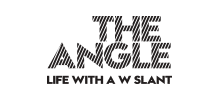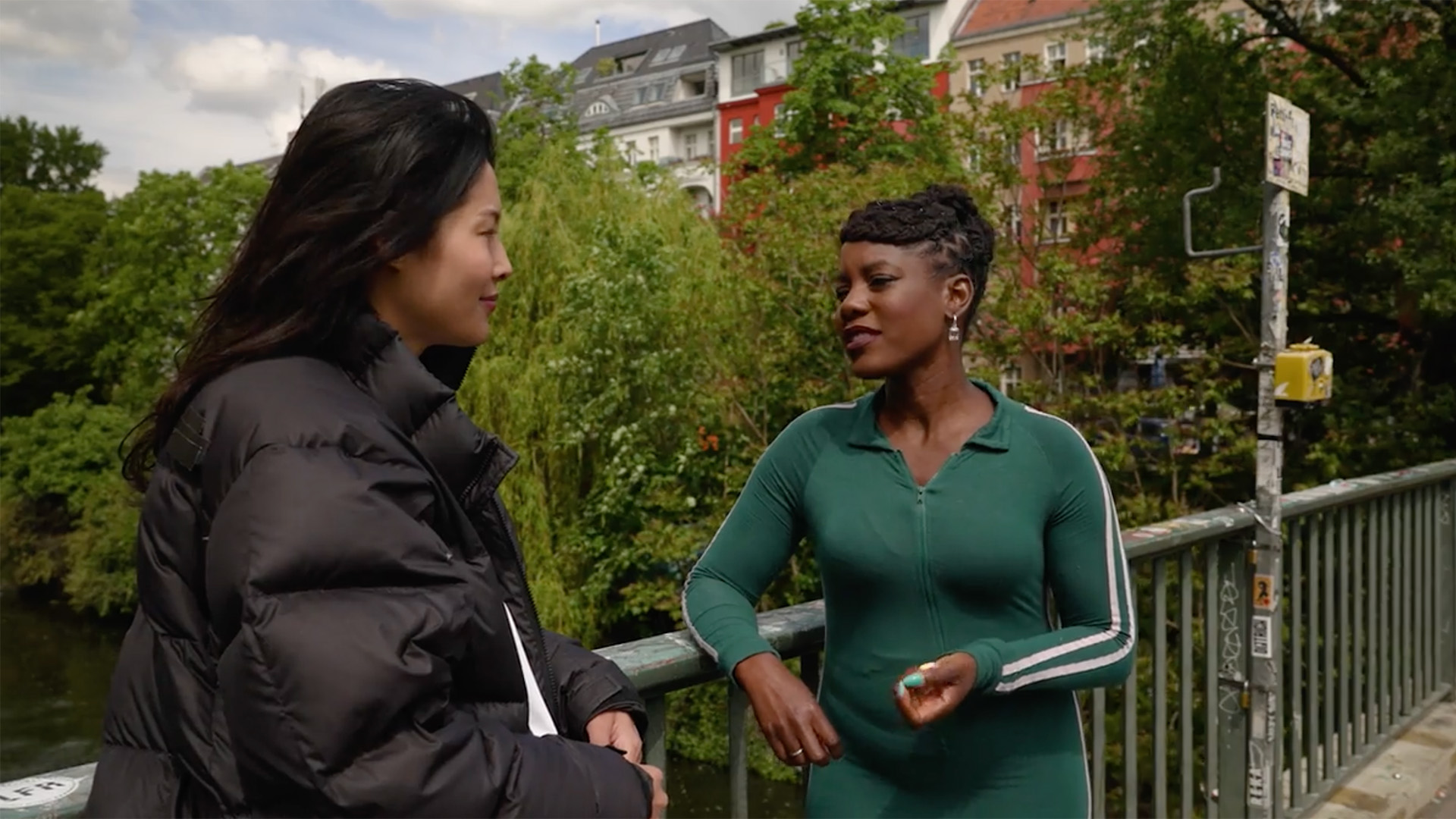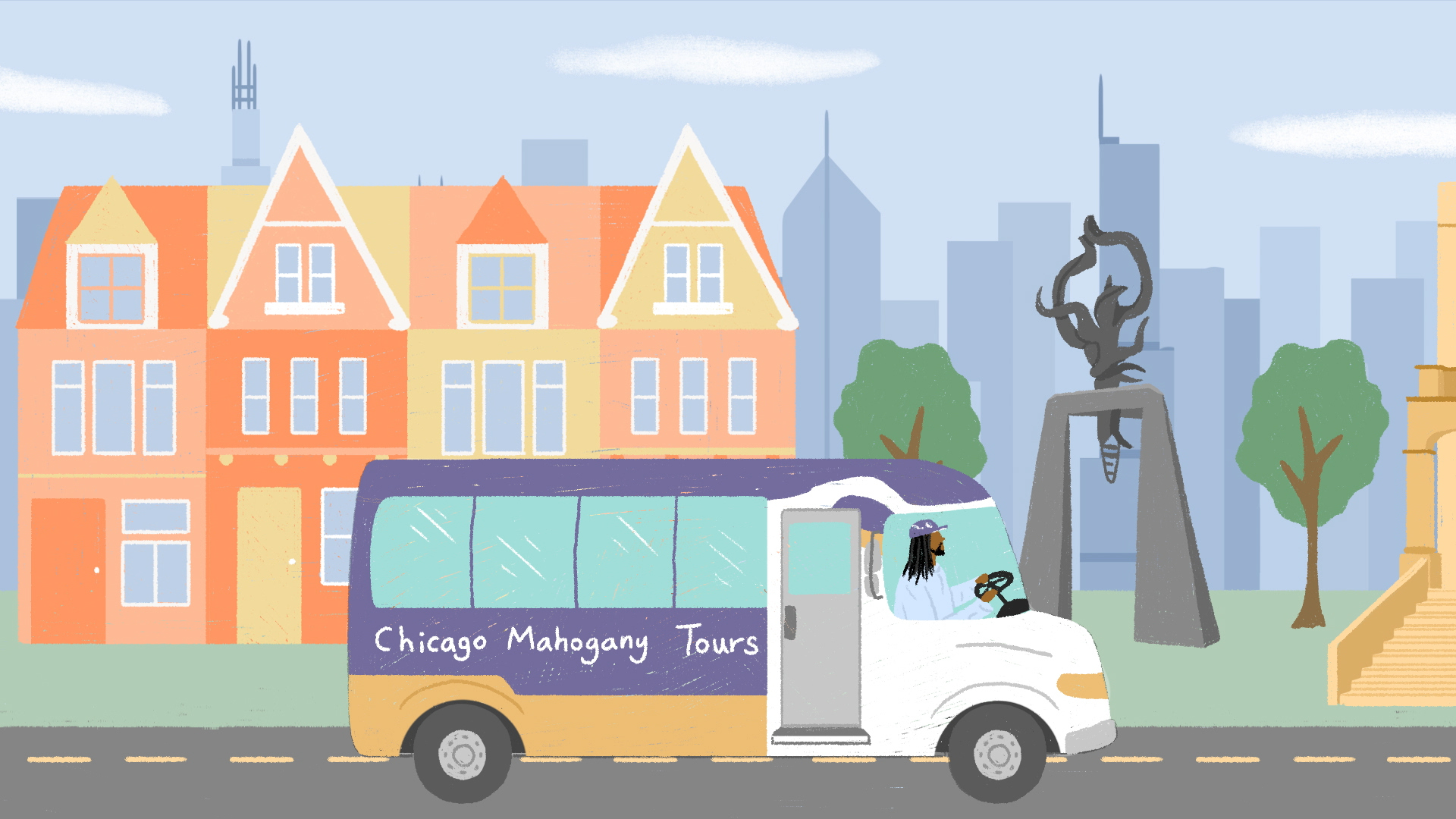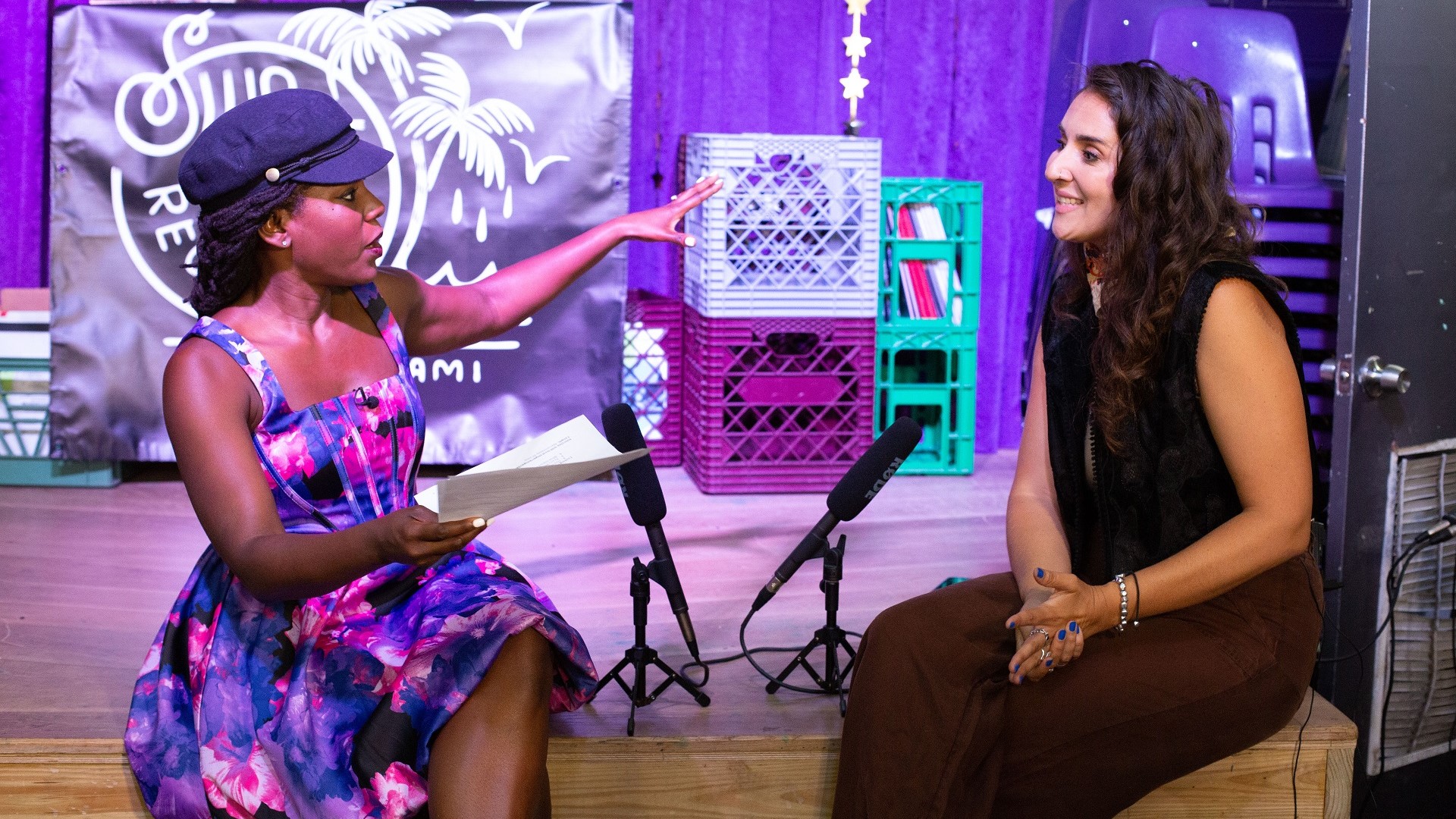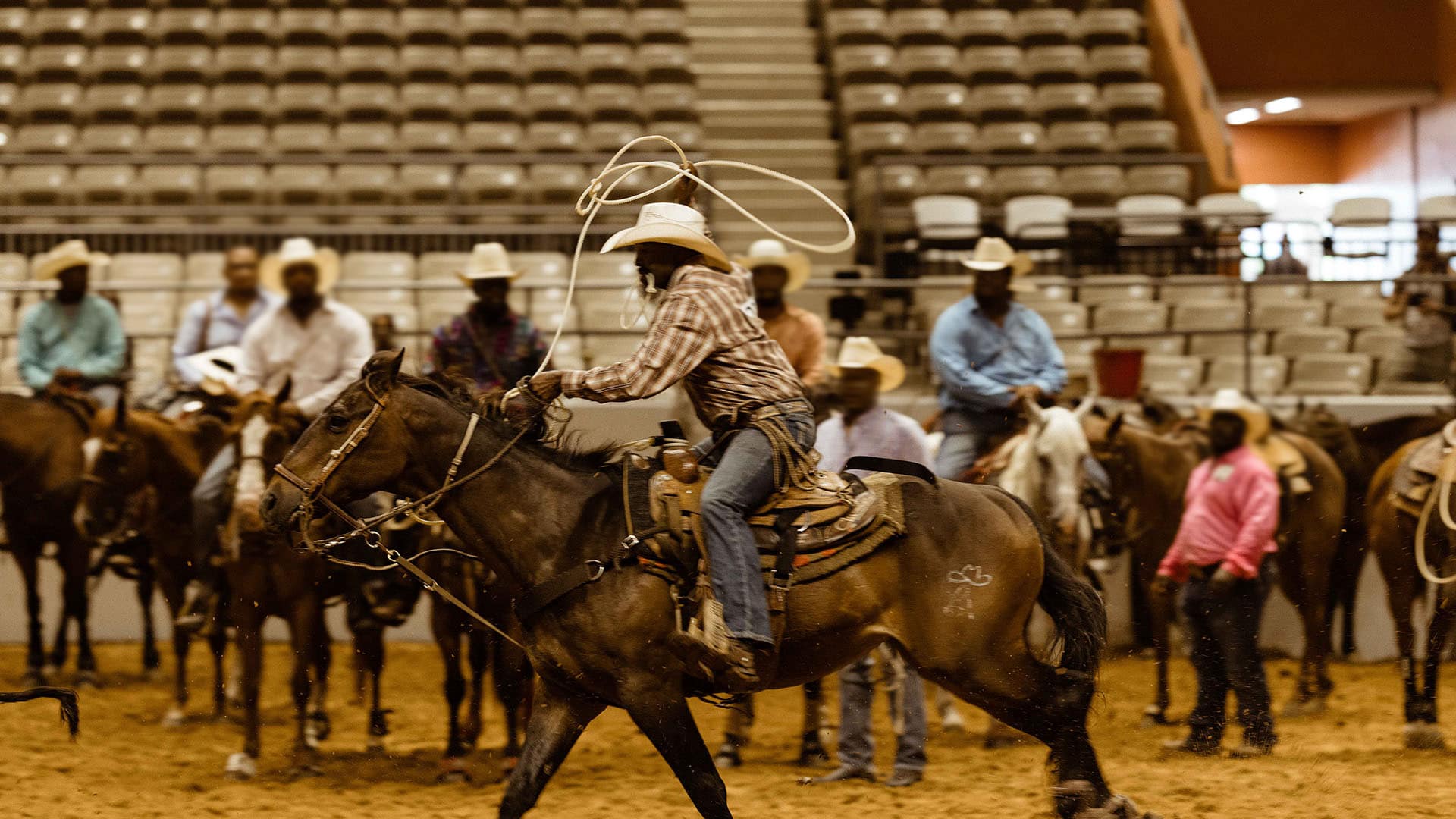
Watch the cowboys in action. (Photo: Marriott International)
About the JourneyCelebrate Juneteenth at the Texas Black Invitational Rodeo
By Taylor WoodyOneika Raymond makes her way to Dallas, Texas on Juneteenth weekend for the legendary 33rd Annual Texas Black Invitational Rodeo to get to know Black cowboy culture and history, a part of the American story that often goes untold.
From galloping horses and the hoots and hollers of the more than 300 competing Black cowboys and cowgirls to the reverential sound of the Black National Anthem performed by Dallas local Angel White, we take you behind the scenes of one of the most popular rodeo events around.
We’ll hear from Charles Hearn, the great-grandson of Cleo Hearn, also known as Mr. Black Rodeo, who founded the Cowboys of Color in 1971. He shares how he’s carrying forward his family’s legacy and shaping the new Black West.
But first, we’ll make a stop at the African American Museum of Dallas to take a look back. Oneika sits down with Dr. Marvin Dulaney, the Deputy Director of the museum to hear the origins of the Black cowboy and understand why this history has largely been erased from popular Western media and public knowledge. Dr. Dulaney will also give us insight into what the rodeo means for the story of Dallas today.
So dust off your boots and join us for an action-packed evening of barrel racing, bull riding, steer roping and storytelling.
PODCAST TRANSCRIPT
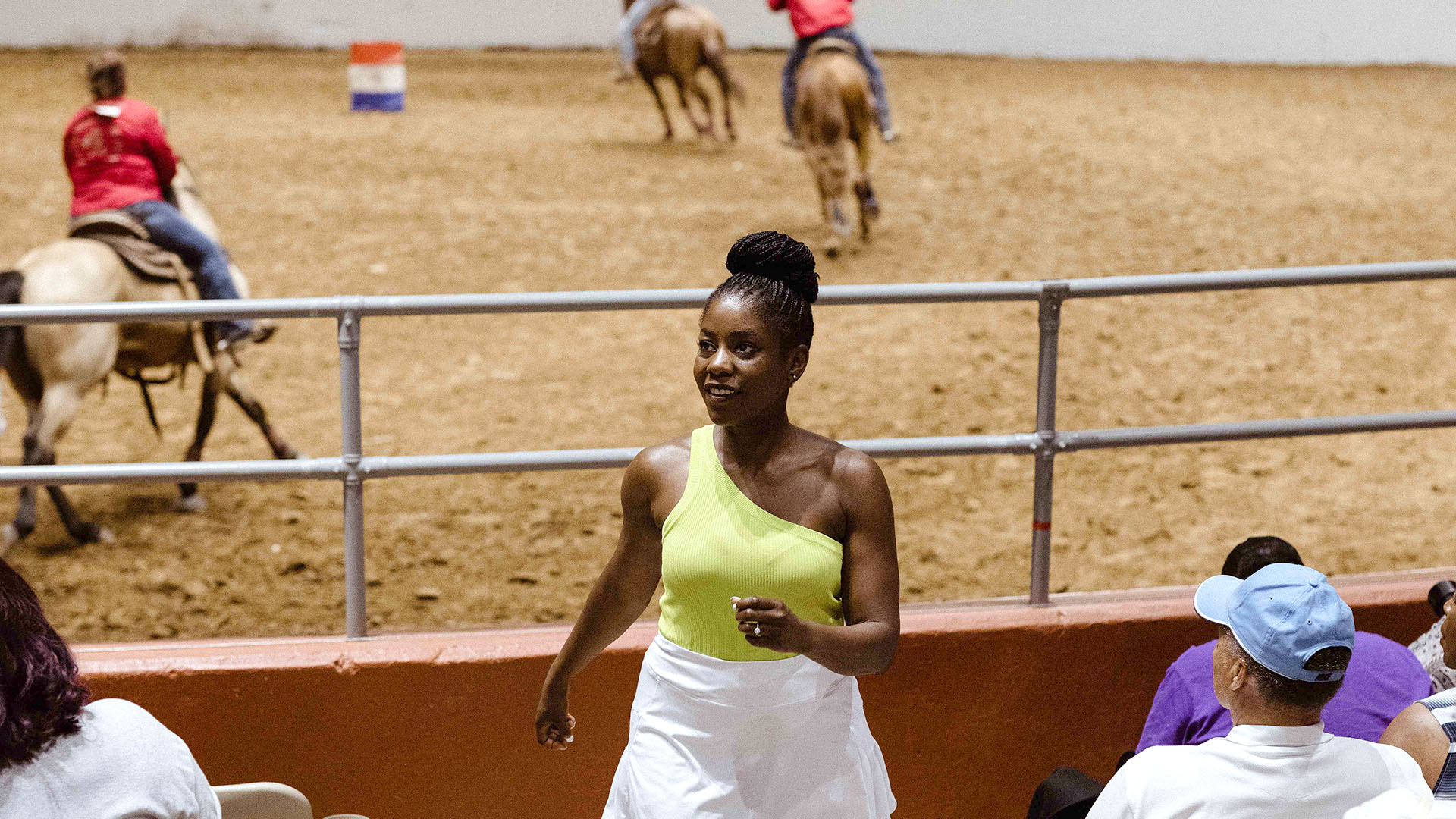
Kevin Woodson: Welcome to the Fair park arena for the 2022 Cowboys of Color, Dallas African American Museum Juneteenth rodeo…
Oneika Raymond: Welcome back to About the Journey. I’m your host, Oneika Raymond, and this week, we’re diving right into the sounds of Texas’s Black rodeo.
Oneika Raymond: I’m here with my friend Robin, who you might remember from D.C.
Oneika Raymond: Baby, aww.
Robin Bennefield: I know.
Oneika Raymond: Looks so innocent.
Robin Bennefield: I know.
Oneika Raymond: Robin, like me, is a Black woman who’s never before been to an all-Black rodeo, so she hopped on a flight to join me in Dallas for one of the most well-known Black rodeos around – and to get acquainted with a piece of our history that has largely been erased but still lives on today.
Oneika Raymond: This is season 2 of About the Journey. This time around, we’re exploring what it means to travel better. What we mean by better though, is open. That’s what we’re traveling across North America to find out. Each week, we speak with the people who know their hometowns best to find out how to be a better visitor.
Today, we’re checking out an absolutely legendary rodeo – the Texas Black Invitational Rodeo. For over 30 years, this rodeo has brought together thousands of people on Juneteenth weekend to celebrate the often overlooked contribution of the Black men and women who helped settle the American West.
Local 1: My family has been here in Dallas since the 1950s – has been here every single year. So this is generation to generation.
Local 2: It’s a great thing to enjoy Juneteenth and to celebrate it, knowing the history of it. And here in Dallas, Texas, at the rodeo, just makes it that much more exciting and wonderful.
Oneika Raymond: This is Dallas, Texas and its founding Black cowboys.
Dr. Marvin Dulaney: We had a hoedown last night. We missed y’all last night, by the way at our hoedown. But it was a lot of fun.
Oneika Raymond: Oh my goodness. I didn’t know there was a hoedown. I…
Dr. Marvin Dulaney: Yeah.
Oneika Raymond: …could have come with my dancing shoes.
Dr. Marvin Dulaney: Yes. With your cowboy hat and your, in your cowboy boots.
Oneika Raymond: That deep voice you just heard is Dr. Marvin Dulaney, the Deputy Director of the Dallas African American Museum. The museum hosts the Texas Black Invitational Rodeo and surrounding events like last night’s hoedown. We stopped by on the morning of the rodeo to ground ourselves in the history of the upcoming festivities.
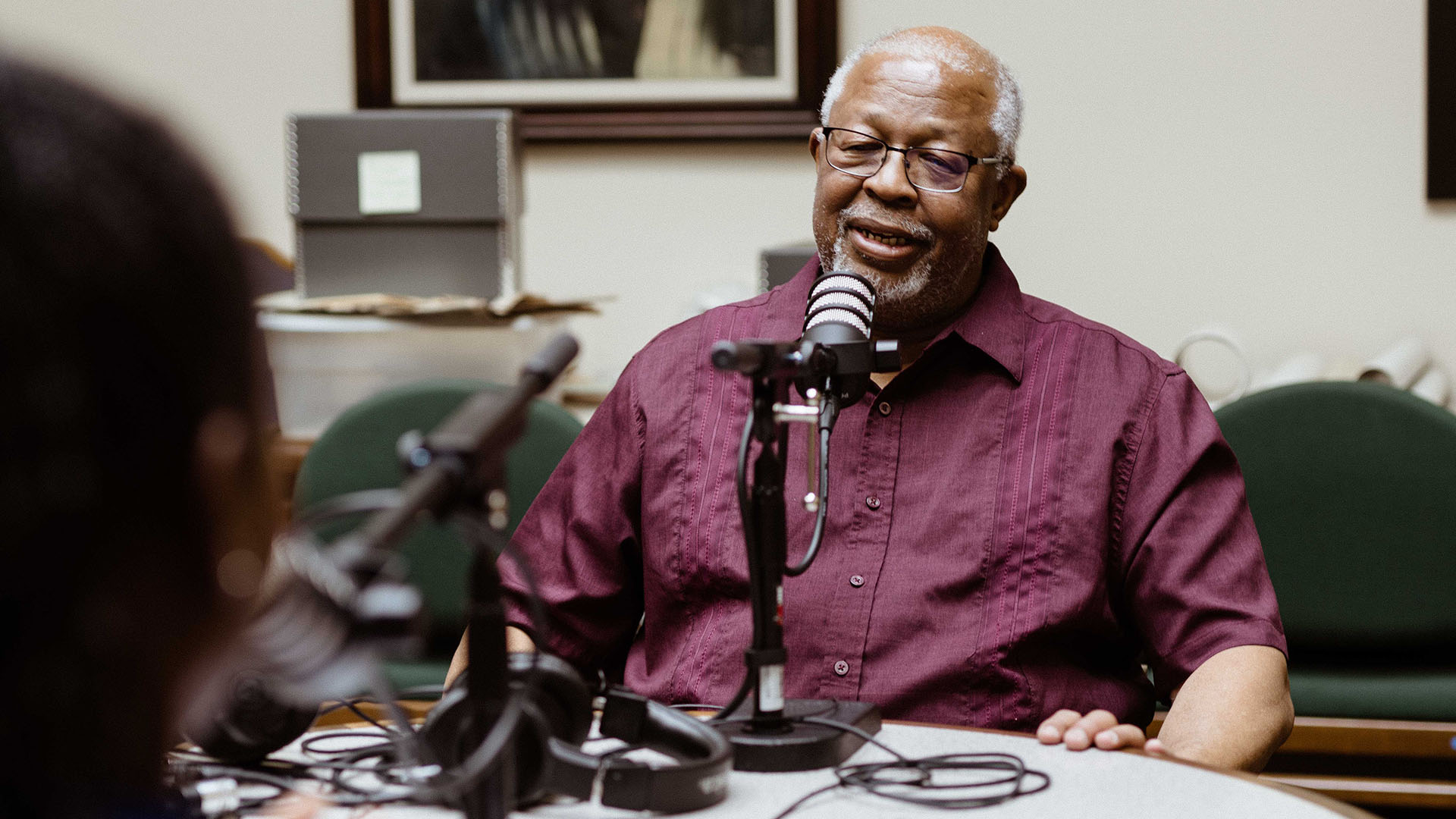
Oneika Raymond: Dr. Dulaney, thank you so much for joining us today. um, what we’re, We’re here to talk about today, is the origin of the, the black cowboy
And I know that for myself, when I think of cowboys, as a black woman, I am not thinking that they look like me right at all, but come to find out that indeed there were, and there are Black cowboys and there is a very rich history and they are part of a very rich cultural fabric. So can you tell me about the origin of the Black cowboy number one and how they came to be here in Dallas?
Dr. Marvin Dulaney: Well, um, first of all let me just give you some of the background on Cowboys. And of course it wasn’t until I became a historian that I learned that indeed the Cowboys of the old West were about 30% to 40% of them were African Americans. That’s some hard work being a cowboy. It wasn’t the fun that we see on television with the cat chaps and the ten gallon hats and the two guns.
Oneika Raymond: So not as glamorous as it’s portrayed on film TV.
Dr. Marvin Dulaney: But the history of Cowboys goes even further back then the old west. In the 1690s the colony of South Carolina was struggling to find a source of income and wealth and revenue, because basically they indeed had to pay taxes back to Great Britain, so they were struggling to find what is gonna make this colony profitable on the way to what they would eventually find, which was of course growing rice was herding cattle, herding goats and sheep. And of course they were bringing hundreds of Africans and then thousands of Africans into South Carolina and the Africans, many of the Africans from the Western coast of Africa had experience of, of goat herding in particular.
And so indeed they, they became like the first Cowboys then in this country herding goats and cattle and sheep in South Carolina.
Oneika Raymond: Wow. And they were experts.
Dr. Marvin Dulaney: Yes.
Oneika Raymond: Right, but obviously not accorded the respect that we would, naturally…
Dr. Marvin Dulaney: And again that story sort gets lost. And all of the transition to, you know, cattle herding in Texas and in the Southwest, which of course is the main story…
Oneika Raymond: Mm-hmm.
Dr. Marvin Dulaney: …about this country, at least up until the 20th century.
Oneika Raymond: Let me ask you why you think Black cowboys are left out of the narrative?
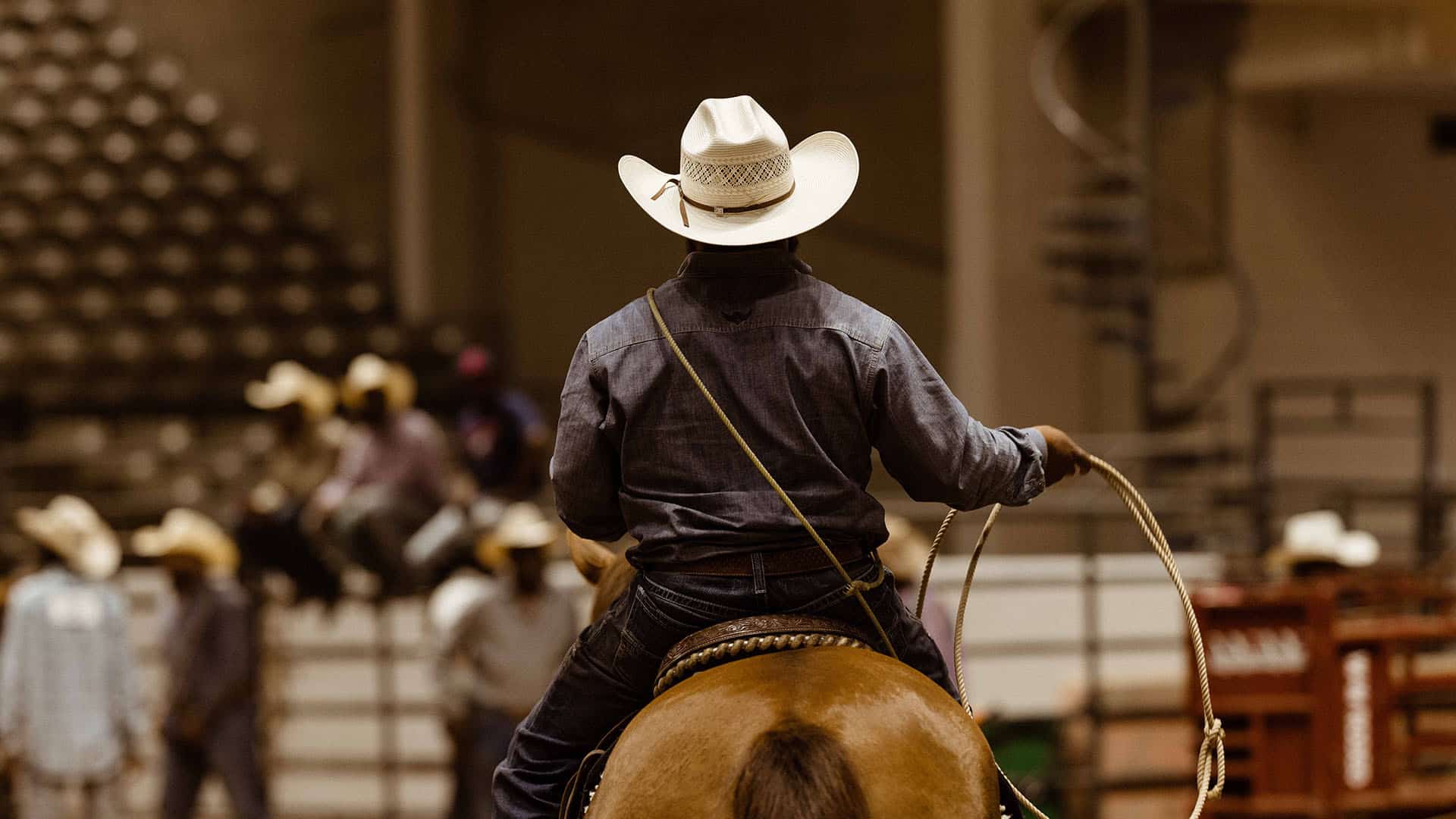
Dr. Marvin Dulaney: Mm-hmm, because, in general, you know, the African American story and part of the American history narrative is left out and lost. And so as a result, we get what we have today. You know, TV, television and radio – because they did a lot of these stories about cowboys in early radio in the ’30s and ’40s – and so basically those are powerful images and stories that, again, with, some of the roles that John Wayne played and some of the roles that Hoot Gibson started playing in the ’30s and ’40s, that was sort of passed down and you see this. You see, I remember all those stories because, indeed, they were on television, constantly, showing these white heroes.
Oneika Raymond: Yeah. And for better or worse, they’re rewriting history essentially. Right? Because if you yourself – right? – were not there to see it personally, then you would not know.
Dr. Marvin Dulaney: And of course, a lot of that is mythology, too.
Oneika Raymond: Mm-hmm.
Dr. Marvin Dulaney: Because cowboys are working. They don’t have time to be in saloons drinking and shooting and killing each other.
Oneika Raymond: Right.
Dr. Marvin Dulaney: In most instances in the so-called Old West…
Oneika Raymond: Right.
Dr. Marvin Dulaney: …they are indeed herding the cattle on that Chisholm trail and the other trails northward to, in order to make money.
Oneika Raymond: So tell me what is the impact? Not just of the event, but of black cowboy culture in general on the city of Dallas.
Dr. Marvin Dulaney: It helps the city of Dallas to tell this story that is not well known. In fact, it helps us as the African American Museum to tell the story of African American cowboys and to raise the consciousness and the knowledge of black history in general in the city of Dallas. So it has a tremendous impact in that while we tend to focus on here in Dallas, in particular Black politics and you know, Black education and racism and discrimination here, we have an opportunity with this event to tell a different story, to tell a story of success, to tell a story of skill and to tell a story of how African Americans were present in a field that they, that people really don’t know anything about. And, I’ve been surprised sometimes by when, when I, when we have the rodeo, people will actually come to me and say, I didn’t know, there were black Cowboys. And I, and I said, yes, and here’s the example. And here’s the heritage that these young men and women, you know, sort of carry on, in terms of Black history in this country. So the two just sort of go together – Juneteenth and the Black rodeo.
Oneika Raymond: We leave Dr. Dulaney and drive just a few minutes to the arena, where setup for the rodeo is well under way. Hard working cattle hands tend closely to the animals.
Oneika Raymond: Sorry. Let’s see if I can get in the shade a little bit.
Oneika Raymond: Outside, it’s blazing hot under the Texas afternoon sun. Inside the arena, over 300 cowboys from across the country are already competing in their placement trials.
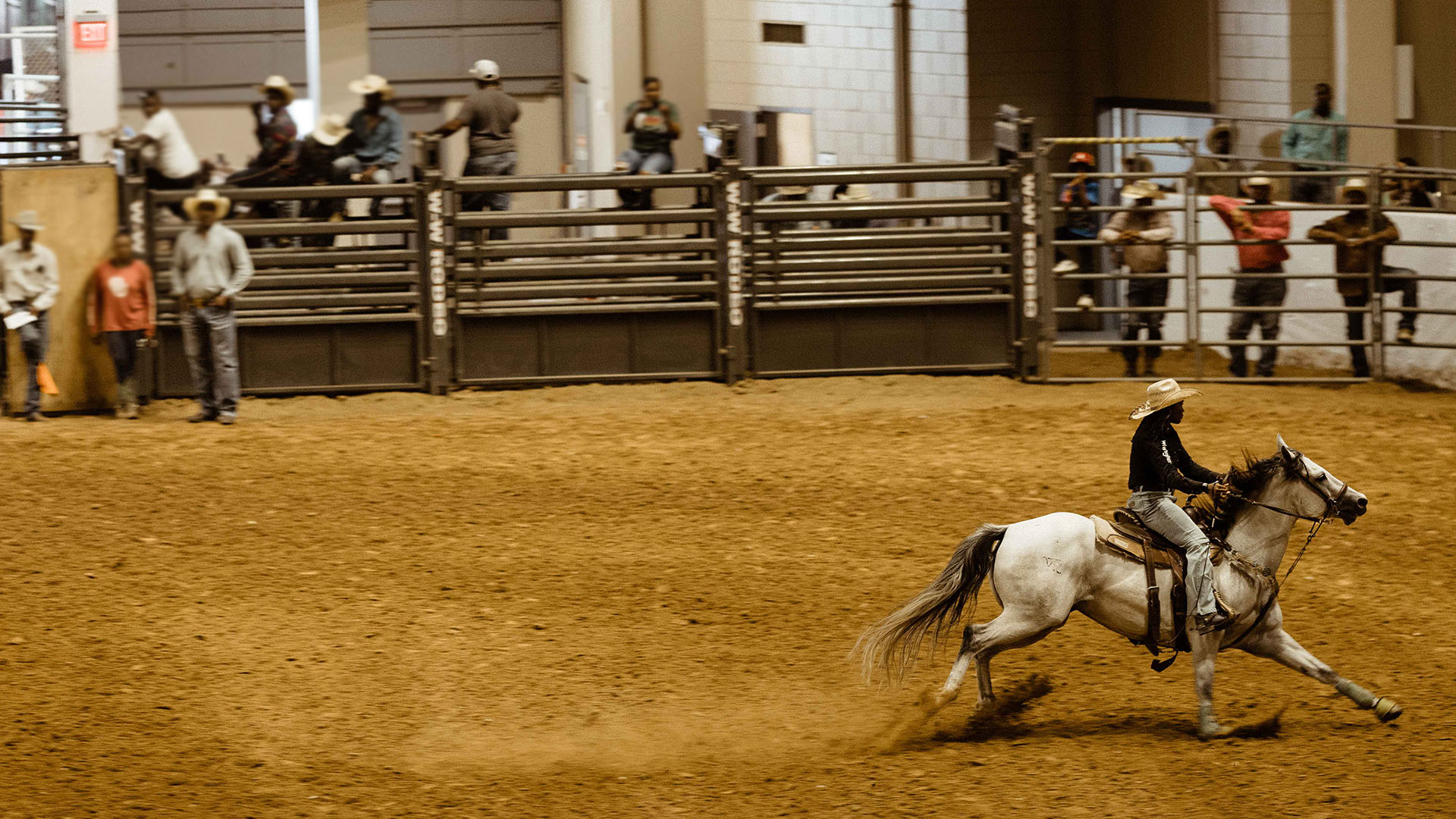
Cowboys: Come on. Come on, stay tight. Yeah.
Oneika Raymond: If they make it through these preliminary rounds, they’ll compete in the finals this evening, for all to see.
Cowboy 1: It’s real big because a lot of people don’t know about the black rodeos. Stuff like that. So I’m very honored to be one of the black Cowboys.
Cowboy 2: Just kind of get together, pray before we go off in there. Pray for us, pray for our horses. Because what we do is a dangerous sport out there. We run around some burrs going fast. It can get wild.
Cowboy 3: I grew up roping around. So to come back and have a jackpot, that’s mainly colored and ethnic. It’s great. I really enjoy it.
Cowgirl 1: I’ll be 70 soon. I’ve been barrel racing for about 10 years. It’s between you and your animal, your horse.
Cowboy 5: Ain’t nothing changed, you know, it’s the same old thing. Ride horses every day, feed horses, either on a farm or your rodeo, it’s all the same.
Angel White: How y’all feeling? Good, good, good?
Oneika Raymond: As the sun sets over Fair Park, the gates open and the rodeo officially begins with an opening ceremony full of song and prayer.
Angel White: I’m gonna be singing a rendition of lift your voice and sing. I hope y’all enjoy.
Oneika Raymond: The soothing chords are the calmest part of the evening. But the calm doesn’t last long.
Oneika Raymond: There we go. Oh, down there. All, all, all all. Oh yeah. Oh, not quite,
Oneika Raymond: The announcer, Kevin Woodson, gives newcomers, like myself and Robin, commentary about each event, like steer wrestling.
Kevin Woodson: So now you all got the hang of how this whole thing works now. By the way, the steer has all four legs that have to be facing in that same direction. If the legs are curled up under the clock will still run.
Oneika Raymond: Once the bull riding begins, there’s a new energy in the stands. Seconds before the bullpen crashes open, you can hear the entire crowd hold its breath.
Kevin Woodson: Here he goes, right there!
Oneika Raymond: All right, there we go. Oh my gosh. Look at him hanging on. That is crazy! That is crazy! Oh my goodness. Look at this bull. He cannot be stopped. That is wild.
Oneika Raymond: The bull bucks the rider in less than 8 seconds – not long enough to get on the scoreboard. But, in that fleeting moment, the crowd is united in awe.
Oneika Raymond: All right. Good job. This is such a difficult, difficult sport.
Oneika Raymond: Now, if you get to know the Black rodeo scene well, one family name you’re sure to come across is the Hearn’s, who’ve put together much of tonight’s rodeo alongside the museum. Their legacy starts with Cleo Hearn, who, in 1971, founded the Texas Black Rodeo, now known as the Cowboys of Color. In his older age, Cleo has largely passed down the operations of the rodeo to his son, Harlan Hearn.
Kevin Woodson: Now the gentleman that you see in the, uh, well, let’s call it a lavender shirt, uh, he’s representing his dad, Mr. Cleo, Hearn this happens to be none other than Harlan Hearn of the Hearn family.
Oneika Raymond: But waiting in the wings to carry forward this family tradition is Harlan’s grandson, Charles.
Oneika Raymond: You are the great mm-hmm grandson of…
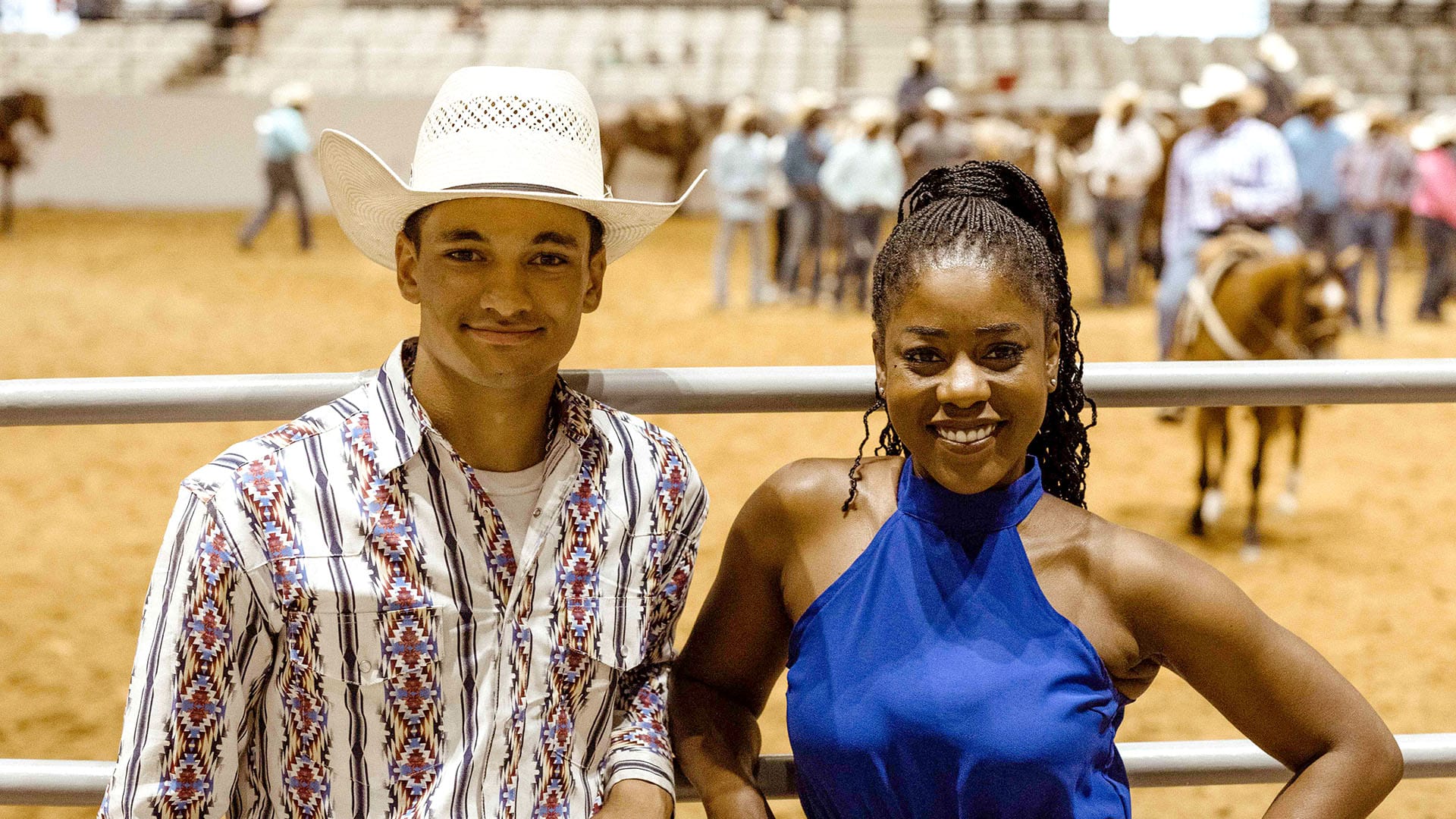
Charles Hearn: Cleo Hearn. He’s known as Mr. Black Rodeo, the first Black Marlboro Man. He won a lot of championships. He was the first African American to win the Denver National Championship Rodeo, which is like a huge rodeo. And back then they didn’t let the Black guys enter. And so for him to win that, it was like a big change. And so then we started the Cowboys of Color rodeo.
Oneika Raymond: Even though Charles is part of a new generation of cowboys, he still faces some of the same barriers in his sport as his great grandfather.
Oneika Raymond: Has it been challenging to simply be or exist as a Black cowboy? Have there been negative reactions from people who are not Black?
Charles Hearn: Yeah. All the time. And so the rodeo in Fort Worth we did – it was like a lot of looks and stares, like, what are they doing here? And why is there a rodeo called the Black rodeo? But when they sit and talk to us, then they know more. But yeah, it’s been difficult. But the more we do it and the more we just keep on rodeoing, like we just fade those comments out.
Oneika Raymond: That’s great. So you just keep on keeping on exactly.
Charles Hearn: Most of their comments are jealous. That’s what that is. Yeah because they’re like, “Black Cowboys, they’re taking over, Black Cowboys are taking over.”
Oneika Raymond: Well, we, we love to see it. We wanna make sure that there’s a space for everyone.
Charles Hearn: Mm-hmm.
Oneika Raymond: How important is it to you to encourage the next generations of Black kids to get into this sport?
Charles Hearn: Yeah. Well, I would say do it ’cause you don’t wanna let it die ’cause the moment you let it die, you won’t see any rodeos like this one. So just do it and don’t listen to anyone. So, be a cowboy, I guess. Buy a hat. Call me, or call someone, and just do it.
Oneika Raymond: We love to see it. Thank you so much for everything you’re doing.
Charles Hearn: Thank y’all. Mm-hmm.
Oneika Raymond: We leave Charles and make our way out of the arena and back to our hotel, The Adolphus. Robin and I came into today ready to learn about a piece of our forgotten history. But leaving the rodeo now, it’s clear to see this story of Black athleticism and excellence is alive and well. Here, they’re making an entirely new Black West.
Robin Bennefield: I do feel like I had a Dallas experience today.
Oneika Raymond: Like the vibes were just crazy in the best possible way. Just seeing and feeling the energy from the crowd. I think we should always challenge the ideas we have of a thing. There’s this rich history of Black Cowboys that is often untold and quite frankly, it’s probably even excluded from the mainstream narrative.
Robin Bennefield: Yes.
Oneika Raymond: So I think that we can continue the legacy, nurture the legacy of Black Cowboys, so that it’s not only a thing of the past or the present, but also of the future. Go and support, you know, support with our time support, with our interest support, with our dollars, you know, attend these events so that it’ll be possible to have them for years to. And I can’t wait to attend another one.
Angel White: [singing] Lift every voice and sing, Till earth and heaven ring, Ring with the harmonies of Liberty…
Oneika Raymond: That’s all for this episode of About the Journey. Thank you to Dr. Dulaney and Charles Hearn. Next week, we’re stepping through the ornate gates of the largest Chinatown in Canada.
Carol Lee: The character scribed on the front ask us to remember the past and look forward to the future.
Oneika Raymond: We hear how revitalization is making Chinatown more than just a time capsule for the local Chinese community.
Emily: About the Journey is produced by Marriott Bonvoy Traveler, AT WILL MEDIA, and me, Oneika Raymond. Our Marriott producers are Robin Bennefield and Jess Moss. Our At Will Media producers are Kait Walsh, Kristy Westgard, Gale Straub and Tina Turner. Editing by Greg Deavens II and Andrew Holzberger.
If you’d like to find out more ways you can experience Dallas African American culture and history go to visitdallas.com where you’ll find the Black Dallas page.
If you enjoyed Angel White’s rendition of “Lift Every Voice” at the rodeo you can check out our show notes for a link to his work.
You can learn more about visiting Dallas and how to travel more meaningfully — from Marriott Bonvoy Traveler at traveler.marriott.com
And if you liked this episode of About the Journey, please be sure to rate, review, and subscribe wherever you get your podcasts.
I’m your host, Oneika Raymond. See you next week.




